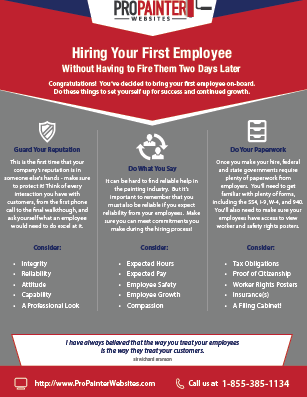The Impact Of Climate Condition On Commercial Paint
The Impact Of Climate Condition On Commercial Paint
Blog Article
school building painting By-Bitsch Cox
When you're handling an industrial painting job, you can not disregard how climate plays a critical function in your success. Elements like temperature, moisture, and wind can either improve or undermine your efforts, affecting every little thing from application top quality to safety on duty website. You may think you can paint anytime, but the fact is that certain conditions can bring about costly delays or inadequate finishes. Recognizing these components is key, but what certain strategies can you carry out to make certain optimum results among uncertain weather?
Temperature and Paint Application
When it concerns commercial painting, temperature level plays a critical role in how well the paint sticks and dries. If you're planning a project, keep an eye on the temperature level range advised by the paint producer. Ideally, you intend to work within that range for ideal results.
When temperature levels are also low, paint can come to be thick and tougher to apply, leading to uneven protection. You might find yourself battling with brush strokes or roller marks that simply will not vanish.
On the other side, heats can trigger paint to completely dry as well rapidly. This can lead to concerns like fracturing or peeling off, as the paint does not have enough time to bond properly to the surface area.
If it's too warm, consider scheduling your work for cooler parts of the day, such as early morning or late afternoon.
Humidity and End Up Top Quality
Humidity considerably impacts the coating quality of industrial paint jobs. When humidity levels are high, moisture airborne can interfere with the drying out procedure of paint. This can bring about issues like inadequate bond, unequal coatings, and raised drying times.
You could find that your paint takes longer to cure, which can delay your project timeline.
On the other hand, reduced moisture can additionally position problems. If the air is too dry, paint can dry too rapidly, preventing proper leveling and causing a rough coating. You want your paint to flow efficiently, and rapid drying out can prevent that, leaving you with an unacceptable surface area.
To attain the best coating, aim for moisture degrees between 40% and 70%. This variety permits ideal drying problems, ensuring that the paint adheres well and levels out appropriately.
Consider making use of dehumidifiers or fans to control moisture in indoor projects, and try to prepare outdoor tasks for days when moisture is within the optimal variety. By taking notice of humidity, you can enhance the final appearance and resilience of your industrial paint work.
Wind and Outside Conditions
While you mightn't think about wind as a significant variable, it can considerably influence the result of outside commercial painting jobs. High winds can interrupt your application procedure, causing paint to dry too promptly. When repaint dries too quickly, it can cause an irregular coating or visible brush strokes.
You'll additionally encounter obstacles with paint overspray, as wind can carry bits far from the desired surface area, resulting in squandered products and possible damage to surrounding locations.
In addition, strong gusts can develop security dangers at work site. Ladders and scaffolding are much more at risk to tipping in gusty conditions, putting your team in danger. It's vital to monitor wind speeds prior to starting a task. If winds surpass safe restrictions, it's finest to postpone your job to make certain a high quality surface and keep safety.
On calmer days, you can capitalize on the best problems to achieve smooth, expert results. Always check the weather prediction and strategy as necessary.
Conclusion
Finally, comprehending how weather condition influences business painting is critical for achieving the best outcomes. By keeping please click the following post of temperature level, moisture, and wind conditions, you can schedule your tasks during optimum times. This not only makes certain a smooth application but also improves the top quality of your finish. So, watch on the forecast and strategy as necessary-- doing so will conserve you time, money, and disappointment while delivering a professional end result whenever you repaint.
